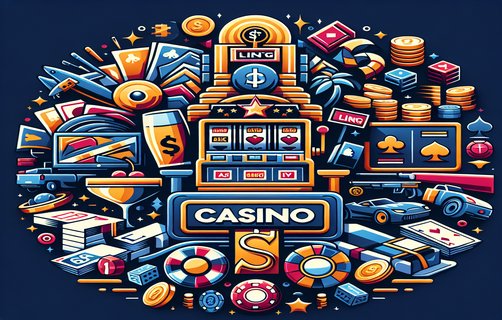Mastering the Art of Roulette Whisky: Strategies, Errors, and Risk Management
राउलेट व्हिस्की की कला में महारत: रणनीतियाँ, त्रुटियाँ और जोखिम प्रबंधन
Roulette whisky—a vivid metaphor for the unpredictable blend of chance and strategy at a gaming table—has captivated many a gambler. The core of roulette lies not just in spinning the wheel and placing bets, but in a series of strategic decisions, risk management, and psychological elements that can greatly influence outcomes. This article seeks to delve into interesting aspects such as betting errors, amount adjustment planning strategies, game error analysis, timing and pace flow, gesture move tactics, and risk strategies.
Betting errors can be minor slips or grave miscalculations. A common oversight might involve players not adjusting their bets according to the game flow, resulting in missed opportunities or unnecessary losses. For instance, failing to recalibrate bets after experiencing a series of losses can lead to chasing losses without a sound strategy. This kind of impulsive behavior often leads to what players affectionately call a 'betting error’. To counter this, setting clear rules for when to increase or decrease bets can fortify a player's approach and avoid falling into a loss-chasing trap.
Planning for amount adjustment involves calculating how much should be bet in relation to potential outcomes and existing funds. This requires a disciplined strategy. A commonly used method is the Martingale approach, where a player doubles their stake after every loss to recover previous losses. However, this strategy has its pitfalls—it requires substantial bankroll and can lead to dizzying losses quickly. More achieved players advocate for a percentage of the bankroll strategy, where a fixed percentage of the total funds is set for each spin. This not only provides better longevity but also instills a level of discipline rarely seen in gambling enthusiasts.
Game error analysis focuses on comprehending the nuances of game mechanics and understanding probability beyond simple guesswork. Players must familiarize themselves with the rules of the particular style of roulette they are engaging in, such as European or American roulette. Each format possesses unique odds that can impact the effectiveness of a strategy. By conducting detailed analyses post-game to track what worked and what didn’t, players can redefine approaches, honing their skills over time.
Timing, pace, and flow is crucial in roulette. Savvy players gauge not only their own betting rhythms but also those of the dealers and the table's overall pace. Rushed decisions often lead to regrettable outcomes, while a measured tempo allows for thoughtful wagers. By observing the overall game tempo, players can better anticipate opportunities to capitalize on potential table trends.
Gesture move tactics play a notably psychological role in roulette. Players may subconsciously project confidence through their body language, or conversely, show signs of hesitance through hesitation in movements. Recognizing these cues, whether in oneself or opponents, can give an astute player an edge in predicting behavior and adjusting tactics accordingly, which can be invaluable in games often steeped in statistical uncertainty.
Lastly, establishing robust risk strategies is paramount. A successful roulette player knows how to set boundaries for losses as well as profit-taking, distinguishing between discipline and reckless abandon. By establishing pre-game financial limits, players can ensure they play responsibly, safeguarding against emotional betting that might skew logical decision-making. Not only should players consider the monetary aspect but also the psychological hook of gambling—knowing when to walk away is an essential skill that must not be overlooked.
Through recognizing the importance of understanding one’s betting errors, developing adjustment strategies, analyzing in-game dynamics, managing pacing, and utilizing psychological tactics, players can enhance their roulette experience. By approaching the game with both strategic intent and informed instinct, they transform what is perceived as a mere game of chance into an engaging battle of wits and tactical finesse.
राउलेट व्हिस्की—एक जीवंत उपमा जो कैसीनो में अवसर और रणनीति के अप्रत्याशित मिश्रण का प्रतिनिधित्व करती है—ने कई जुआरों को आकर्षित किया है। राउलेट की मूल बातें केवल पहिया को घुमाने और दांव लगाने में नहीं हैं, बल्कि यह एक श्रृंखला के रणनीतिक निर्णयों, जोखिम प्रबंधन और मनोवैज्ञानिक तत्वों में हैं जो परिणामों को काफी प्रभावित कर सकते हैं। यह लेख ऐसी दिलचस्प पहलुओं की जांच करने का प्रयास करेगा जैसे कि दांव लगाने में त्रुटियाँ, राशि समायोजन योजना रणनीतियाँ, खेल त्रुटि विश्लेषण, समय और गति प्रवाह, इशारा चाल रणनीतियाँ, और जोखिम रणनीतियाँ।
दांव लगाने में त्रुटियाँ मामूली गलती हो सकती हैं या गंभीर गणनाएँ हो सकती हैं। एक सामान्य अवहेलना में खिलाड़ी खेल के प्रवाह के अनुसार अपने दांव को समायोजित नहीं करते, जिसका परिणाम अवसरों का नुकसान या अनावश्यक हानियाँ होती हैं। उदाहरण के लिए, हानियों की एक श्रृंखला का अनुभव करने के बाद दांव को फिर से कैलिब्रेट करने में विफल रहना अक्सर एक 'दांव लगाने की त्रुटि' का कारण बनता है। इसे रोकने के लिए, यह तय करना कि दांव कब बढ़ाना या घटाना है, खिलाड़ी के दृष्टिकोण को मजबूत कर सकता है और नुकसान का पीछा करने के जाल में गिरने से रोक सकता है।

राशि समायोजन के लिए योजना बनाना उस धन के संबंध में कितना दांव लगाना है, की गणना करने में शामिल होता है। यह एक अनुशासित रणनीति की आवश्यकता है। एक सामान्य तैयारी में मार्टिंगेल पद्धति का उपयोग किया जाता है, जहां खिलाड़ी हर हानि के बाद अपनी दांव को दोगुना करता है ताकि पिछले नुकसान को पुनः प्राप्त किया जा सके। हालाँकि, इस रणनीति में अपनी खामियाँ हैं—इसमें substantial बैक रोल की आवश्यकता होती है और तेजी से dizzying नुकसान का सामना करवा सकती है। अधिक अनुभवी खिलाड़ी प्रतिशत के आधार पर बैक रोल रणनीति की सिफारिश करते हैं, जिसमें कुल धन का एक निश्चित प्रतिशत प्रत्येक स्पिन के लिए निर्धारित होता है। यह न केवल बेहतर दीर्घकालिकता प्रदान करता है, बल्कि यह अनुशासन के स्तर को भी स्थापित करता है जो जुए उत्साही में बहुत कम होता है।
खेल त्रुटि विश्लेषण खेल के तंत्र की सूक्ष्मताओं को समझने और सरल अटकलों से परे संभाव्यता की समझ पर केंद्रित होता है। खिलाड़ियों को उस विशेष शैली के नियमों से परिचित होना चाहिए जिससे वे जुड़ते हैं, जैसे यूरोपीय या अमेरिकी राउलेट। प्रत्येक फॉर्मेट में अनूठी संभावनाएँ होती हैं जो रणनीति की प्रभावशीलता को प्रभावित कर सकती हैं। खेल के बाद विस्तृत विश्लेषण करके यह ट्रैक करना कि क्या काम किया और क्या नहीं, खिलाड़ियों को अपने दृष्टिकोण को फिर से परिभाषित करने, समय के साथ अपनी क्षमताएँ निखारने में मदद मिलती है।
समय, गति, और प्रवाह राउलेट में महत्वपूर्ण हैं। चतुर खिलाड़ी अपने खुद के दांव लगाने की गति के साथ-साथ डीलरों और टेबल के समग्र ताल की भी गति का अनुमान लगाते हैं। जल्दी निर्णय लेने से अक्सर पछतावे वाले परिणाम होते हैं, जबकि सोच-विचार का समापन विचारशील दांव लगाने की अनुमति देता है। समग्र खेल की गति का अवलोकन करके, खिलाड़ियों को संभावित टेबल प्रवृत्तियों को भुनाने के लिए अवसरों की भविष्यवाणी करने में बेहतर सफलता प्राप्त होती है।

इशारा चाल रणनीतियाँ राउलेट में एक महत्वपूर्ण मनोवैज्ञानिक भूमिका निभाती हैं। खिलाड़ी अपनी शारीरिक भाषा के माध्यम से विश्वास का निस्संकोचता प्रदर्शित कर सकते हैं, या विपरीत, अपने हिलने में हिचकिचाहट दिखा सकते हैं। इन संकेतों को पहचानना, चाहे स्वयं में हो या प्रतिकूलता में, एक विवेकपूर्ण खिलाड़ी को व्यवहार की भविष्यवाणी करने और तदनुसार रणनीतियों को समायोजित करने में एक लाभ दे सकती है, जो अक्सर सांख्यिकीय अनिश्चितता में डूबे खेलों में अमूल्य होती है।
अंत में, मजबूत जोखिम रणनीतियों का स्थापित करना महत्वपूर्ण है। एक सफल राउलेट खिलाड़ी जानता है कि हानियों और लाभ को लेने के लिए सीमाएँ कैसे निर्धारित की जाती हैं, अनुशासन और लापरवाह आक्रामकता के बीच भेद करना। पूर्व-खेल वित्तीय सीमाओं की स्थापना करके, खिलाड़ी यह सुनिश्चित कर सकते हैं कि वे जिम्मेदारी से खेलें, भावनात्मक दांव लगाने से बचें जो तार्किक निर्णय लेने को बाधित कर सकता है। न केवल खिलाड़ियों को मौद्रिक पहल पर विचार करना चाहिए बल्कि जुआ की मनोवैज्ञानिक जाल से भी—यह जानना कि कब दूर जाना है, एक आवश्यक कौशल है जो अनदेखा नहीं किया जाना चाहिए।
अपनी दांव लगाने की त्रुटियों को पहचानकर, समायोजन रणनीतियों का विकास करके, खेल में गतिशीलता का विश्लेषण करके, गति प्रबंधन करते हुए, और मनोवैज्ञानिक चालों का उपयोग करते हुए, खिलाड़ी अपने राउलेट अनुभव को बढ़ा सकते हैं। रणनीतिक इरादे और सूचित वृत्ति के साथ खेल की ओर बढ़कर, वे इसे एक साधारण अवसर के खेल के रूप में नहीं बल्कि बुद्धि और रणनीतिक क्षमताओं के सम्मोहक युद्ध में बदल सकते हैं।

comments
GamblerGuru
This article provided some great insights into managing betting errors effectively. A must-read for serious players!
WhiskyWager
I particularly loved the section on gesture move tactics. Body language can often say more than the actual bets.
RiskyBet
The amount adjustment planning strategies highlighted here are game-changers. Time to rethink my betting strategy.
SpinMaster88
Great analysis on pacing and game flow! It's crucial and often overlooked.
StrategySeeker
I appreciate the detailed breakdown of betting errors. Learning from mistakes is key in roulette.
RouletteRockstar
Loved the content! Let's put these strategies to the test next time I'm at the table!